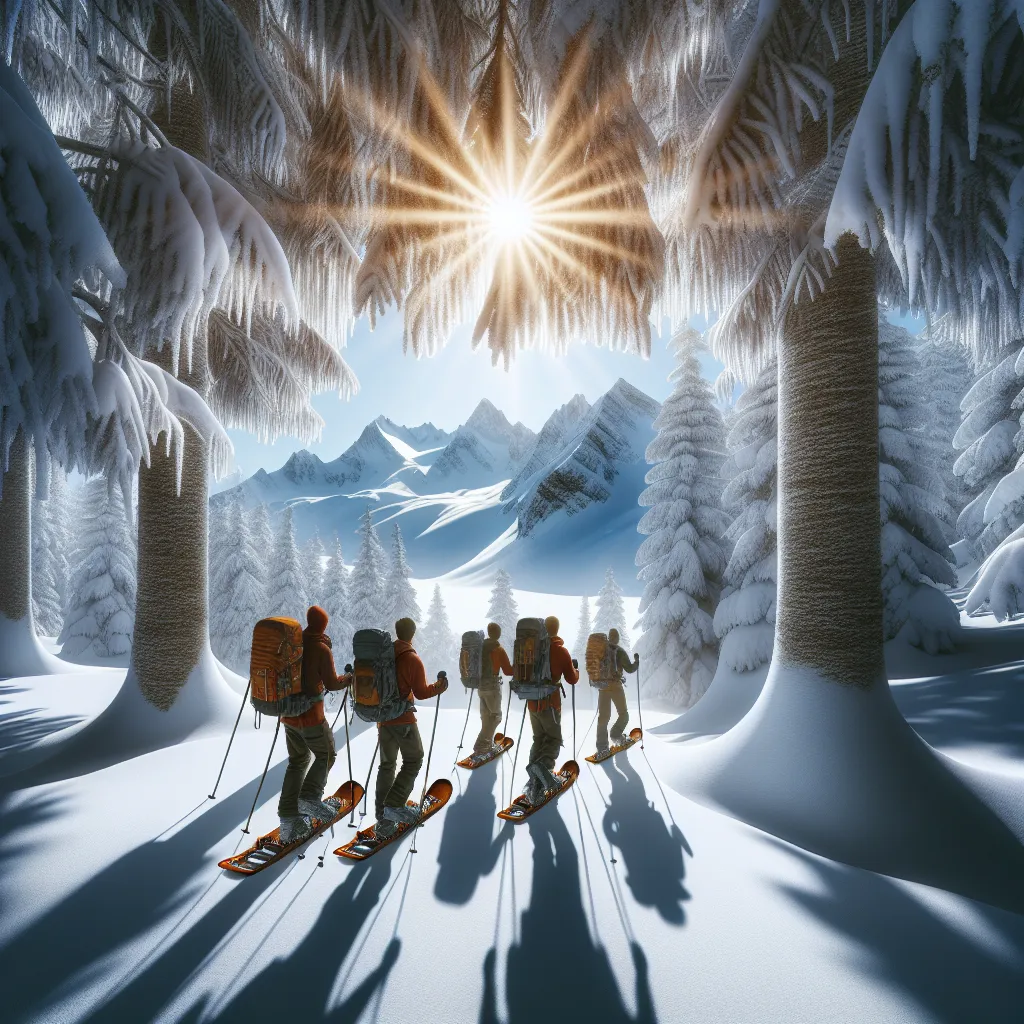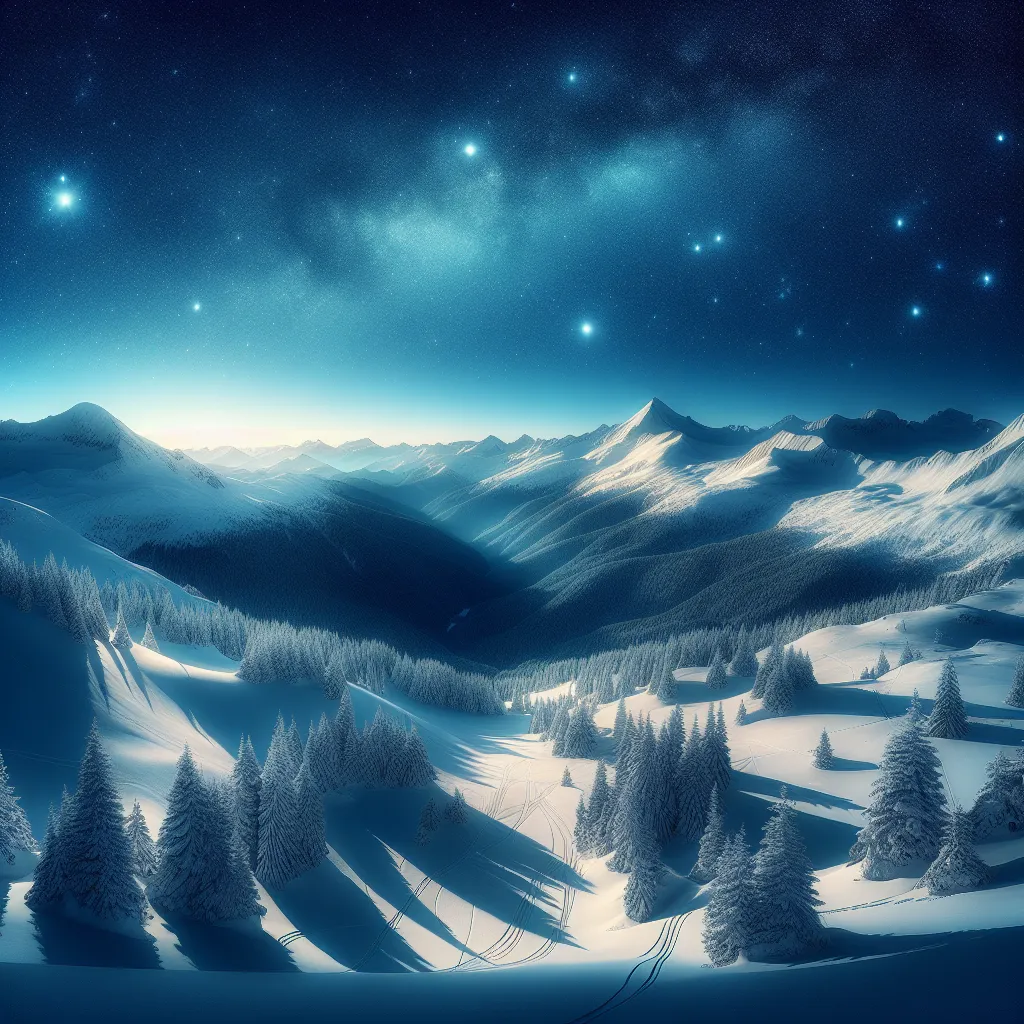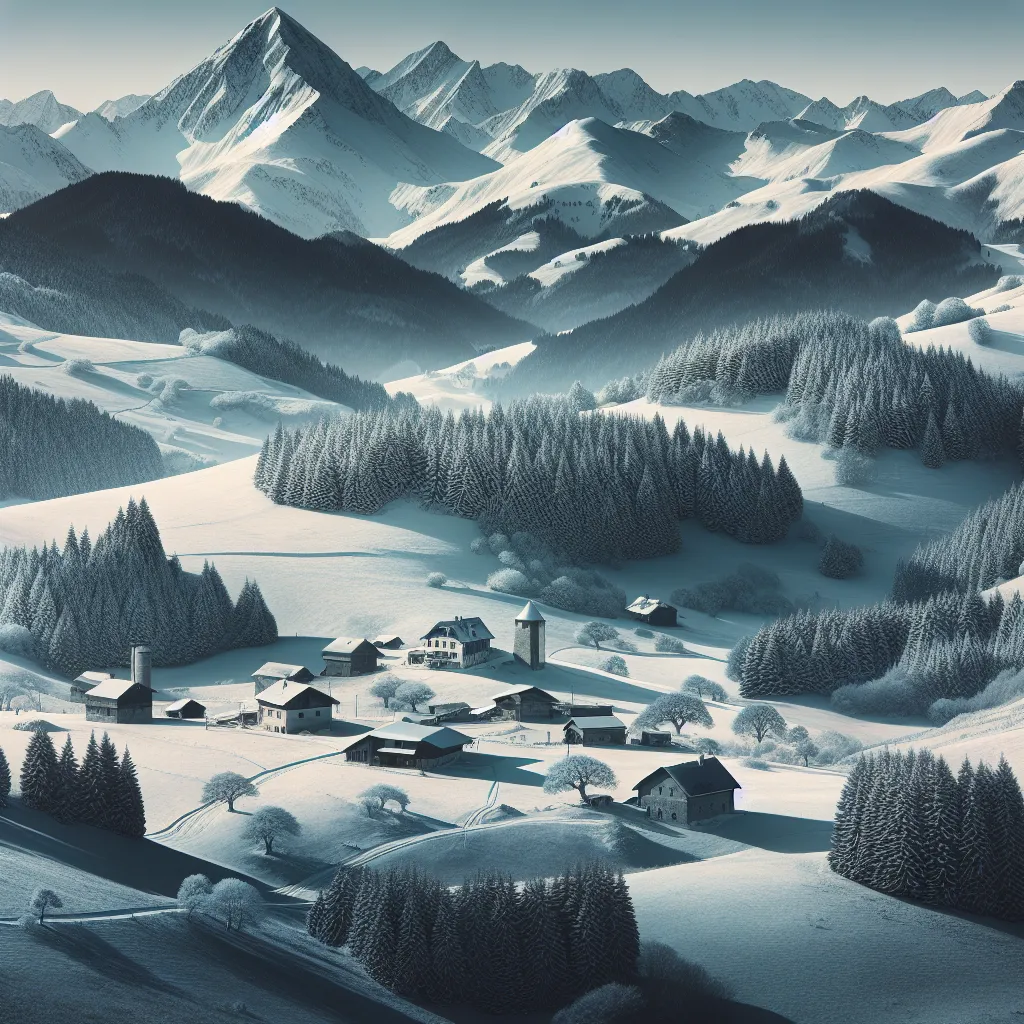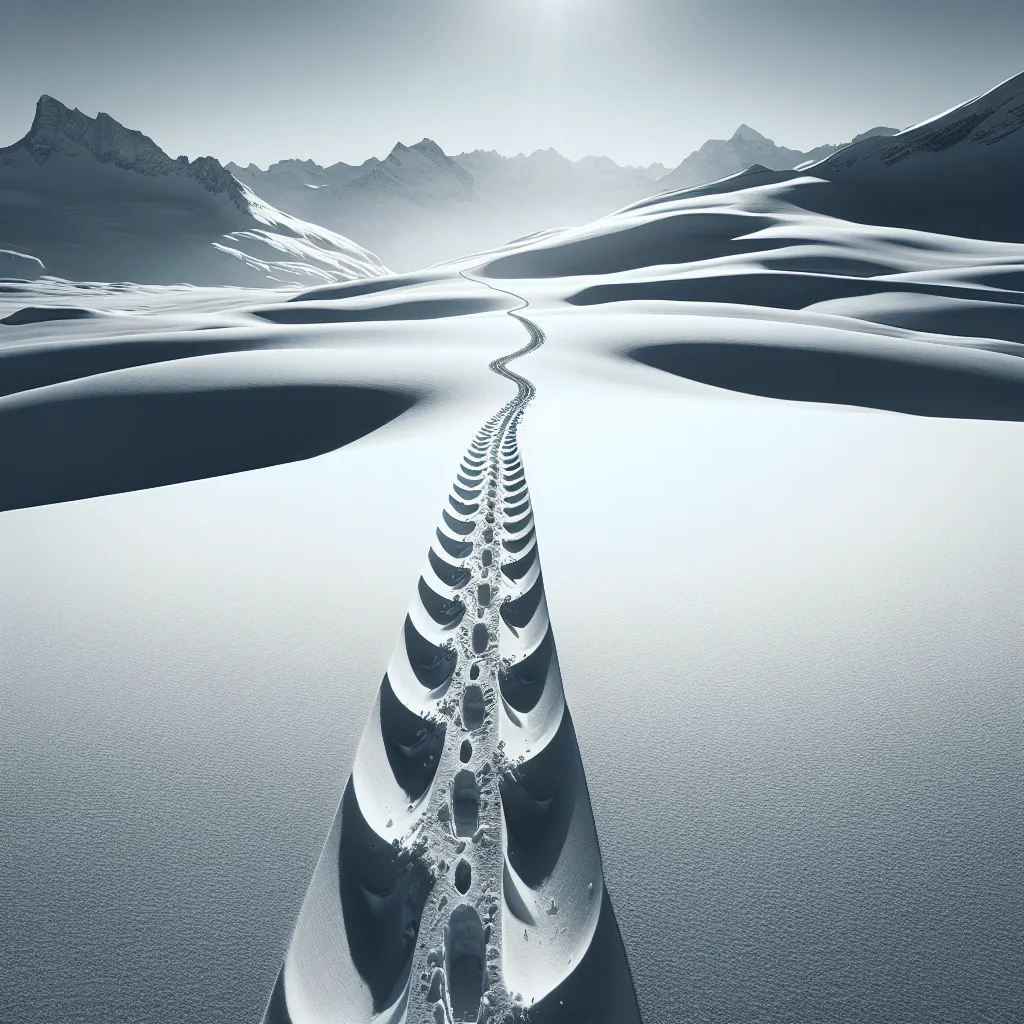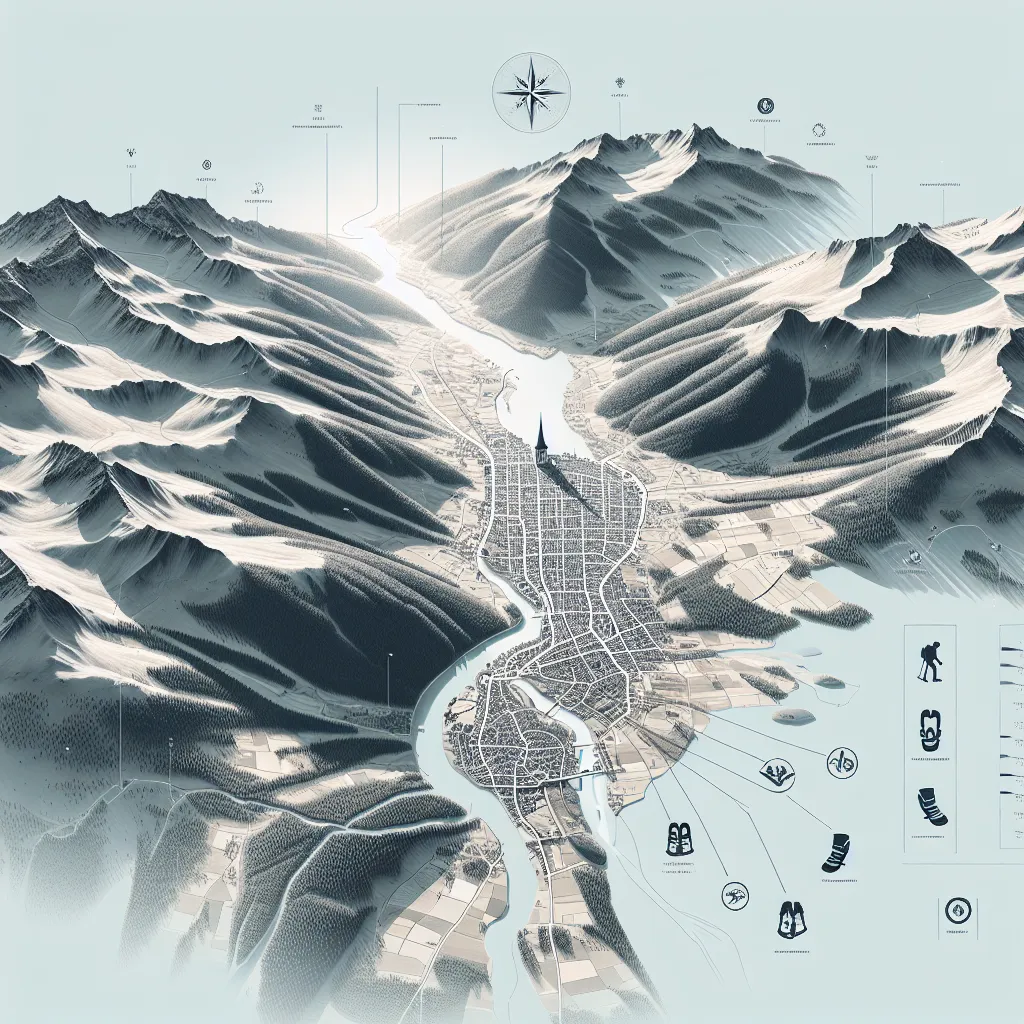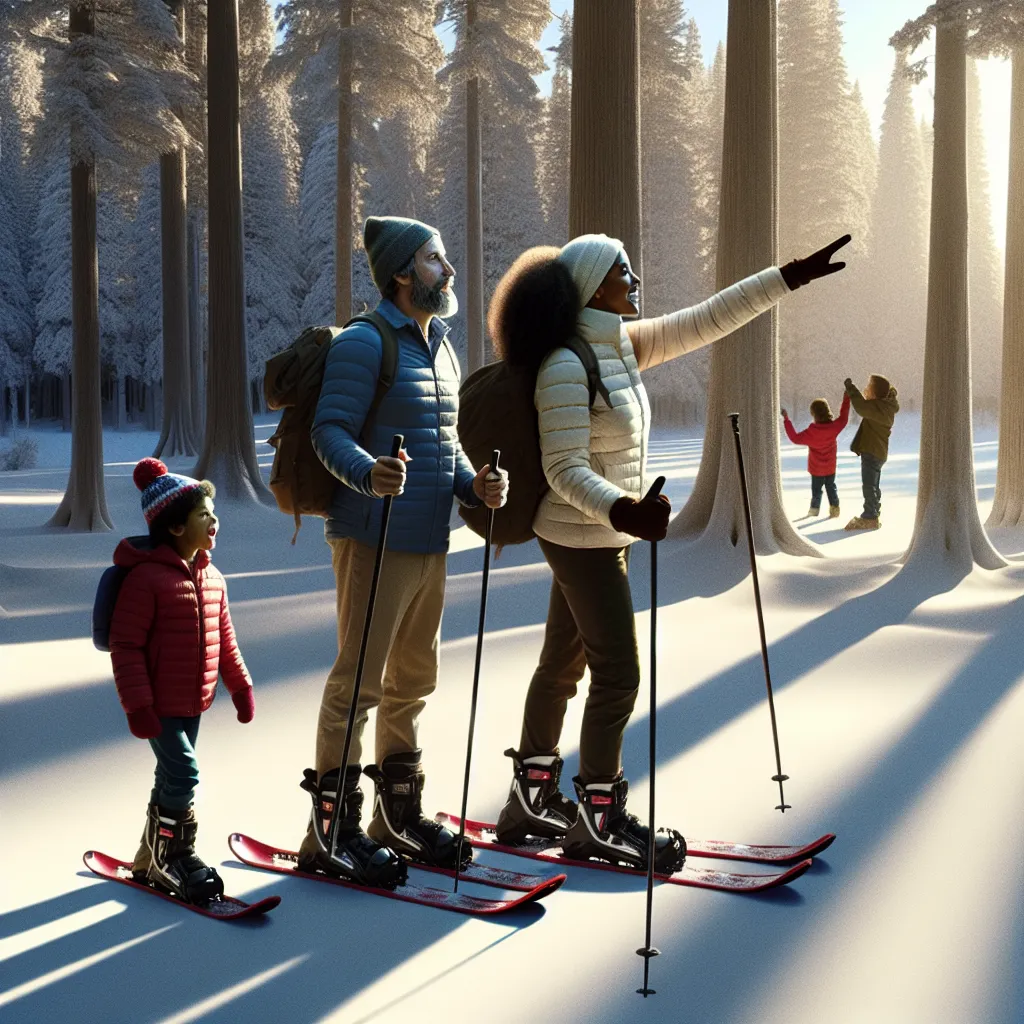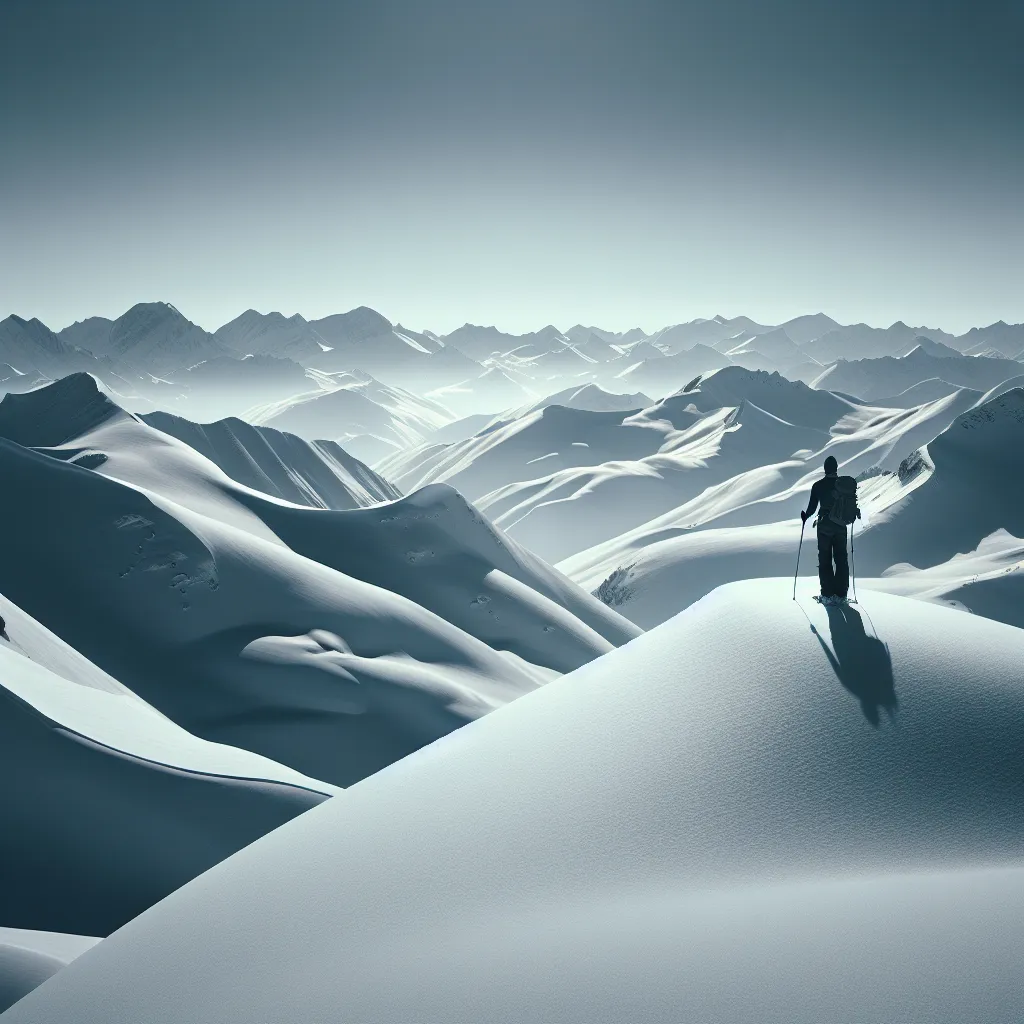Snowshoeing in the Pyrenees: Discover Winter Magic on Raquettes
Experience the serene beauty of snowshoeing in the Ariège Pyrenees. From gentle forest trails to mountain summits, discover the freedom of raquettes walking through pristine snow-covered landscapes in the Couserans region.

Introduction: The Freedom of Snowshoeing
There's a particular magic to snowshoeing that skiers never quite experience. While downhill skiing follows prepared pistes in predetermined directions, snowshoeing offers something increasingly rare in our structured world: complete freedom. The snow creates a continuous white canvas, and suddenly the entire mountain becomes your playground. Every direction is possible. Every slope, every forest, every meadow becomes accessible. You can make your own tracks through virgin snow, following whim and wonder rather than marked trails.
In the Ariège Pyrenees, particularly the Couserans region around St Girons, snowshoeing reveals winter landscapes of extraordinary beauty. Forests transform into silent white cathedrals. Mountain peaks gleam against impossibly blue skies. The usual summer trails disappear beneath snow, and the familiar becomes wonderfully strange. Best of all, snowshoeing requires no particular athletic ability—if you can walk, you can snowshoe. This accessibility makes it perfect for families, couples, groups of friends, or solo adventurers seeking winter mountain experiences without the technical demands of skiing.

Pyrenees Winter Wonderland
Why the Couserans is Perfect for Snowshoeing
The Couserans region, centered around St Girons in the Ariège Pyrenees, offers exceptional terrain for snowshoeing. This area combines gentle valleys perfect for beginners with dramatic mountain peaks that challenge experienced winter hikers. The landscape is incredibly varied: dense beech forests, open alpine meadows, frozen lakes, narrow gorges, and sweeping ridge lines—each offering different atmospheres and different rewards.
What makes the Couserans particularly special is its authenticity. These aren't overcrowded tourist mountains with marked snowshoe "highways." Outside French holiday periods, you might spend an entire day in the mountains encountering only a handful of other people. The sense of solitude, of having these spectacular landscapes largely to yourself, intensifies the winter experience. The only sounds are the crunch of snow underfoot, your own breathing, perhaps the distant call of a mountain bird.
The region's elevation range is ideal—high enough for reliable snow from December through March, but not so high that altitude becomes problematic. Most snowshoe routes range from 1,000 to 2,000 meters, offering stunning views without venturing into technical mountaineering territory. And the climate is notably sunny—the Pyrenees receive more winter sunshine than many Alpine regions, making snowshoeing comfortable rather than an endurance test against cold and cloud.

Couserans Snowshoe Paradise
Routes for Every Level: From Forest Walks to Summit Treks
One of snowshoeing's great advantages is its scalability—routes exist for absolute beginners through to experienced mountain trekkers. In the Couserans, this variety is exceptional.
Gentle Forest Routes are perfect for families with young children or those new to snowshoeing. Trails around Guzet, through the forests near Seix and Massat, or along the valley near Sentein offer easy terrain where the focus can be on enjoying winter nature rather than athletic achievement. These routes typically take 2-3 hours, involve minimal elevation gain, and often follow summer paths wide enough for comfortable walking. Children love the freedom to explore, to make snow angels, to discover animal tracks—a fox crossing the trail, a deer's hoofprints leading into the forest.
Half-Day Mountain Routes step up the challenge with more elevation gain and exposure to open mountain terrain. Popular routes include the ascent to Étang de Lers (a beautiful frozen lake), circuits around the Vallée du Biros, or explorations of the plateau above Guzet ski station. These routes reward effort with spectacular views—on clear days, you can see dozens of peaks stretching towards Spain. The physical effort is genuine but manageable for anyone with reasonable fitness, and the sense of achievement when reaching a summit or scenic viewpoint is deeply satisfying.
Full-Day Summit Expeditions appeal to experienced hikers seeking serious winter adventures. Peaks like Pic de Certescans (2,070m), Mont Valier (2,838m), or Pic du Crabère offer genuine mountaineering experiences. These require good physical condition, proper equipment, winter mountain knowledge, and ideally, the services of a qualified mountain guide. The rewards? Standing on a Pyrenean summit in winter, the world spread below you in white and blue, the silence so profound you can hear your heartbeat—these are experiences that stay with you forever.
The Simple Joy of Making Your Own Tracks
There's something deeply satisfying about being the first to cross fresh snow. After a night of snowfall, when you set out early and find pristine white expanses unmarked by any footprint, each step becomes an act of creation. You're literally making your mark on the mountain, choosing your own line, your own pace, your own destination.
This freedom distinguishes snowshoeing from most winter sports. Skiers follow pistes. Cross-country skiers need prepared tracks. But snowshoers? Anywhere snow lies, you can go. See an interesting ridge line? Head towards it. Curious about what's beyond that forest? Go explore. Notice animal tracks leading up a slope? Follow them and see where they lead.
This improvisational quality makes every snowshoe outing unique. Even familiar routes change completely with different snow conditions, different light, different weather. The forest you walked through last week is transformed after fresh snowfall. The mountain meadow that was sunny and gentle becomes mysterious and atmospheric in light fog. Snowshoeing isn't about conquering routes or achieving times—it's about experiencing winter mountains in their constantly changing moods.

Fresh Snow Tracks
Guided Trips vs. Independent Exploration
The Couserans offers both organized snowshoe excursions and opportunities for independent exploration, each with distinct advantages.
Guided Snowshoe Trips are offered by qualified mountain guides (accompagnateurs en montagne) based throughout the region. Organizations like Couserando and independent guides provide half-day, full-day, and even sunset or full-moon snowshoe excursions. The benefits are significant: guides know the terrain intimately, understand snow conditions and avalanche risk, can identify animal tracks and explain mountain ecology, and often know hidden viewpoints or routes you'd never discover alone. For first-time snowshoers, families with children, or anyone wanting to access more challenging terrain safely, guided trips are excellent investments.
Guides also add social dimension—meeting other outdoor enthusiasts, sharing the experience with a group, hearing stories about the mountains and local culture. Many guides speak English as well as French, making excursions accessible to international visitors. Prices are reasonable (typically €25-45 per person for half-day trips), and equipment rental is often included.
Independent Snowshoeing suits experienced hikers comfortable with winter mountain conditions. Many routes in the Couserans are straightforward enough for independent exploration with good maps, appropriate equipment, and weather awareness. The tourism office in St Girons provides route information, and several guidebooks detail Pyrenean snowshoe itineraries. The advantages? Complete freedom over timing, pace, and route choices. The ability to turn a planned 3-hour excursion into 5 hours because you've found a perfect lunch spot. The profound solitude that comes from being genuinely alone in winter mountains.
However, independent snowshoers must understand winter risks. Avalanche awareness is essential for any route beyond gentle forest trails. Weather can change rapidly. Winter days are short—starting late means finishing in darkness. Proper equipment (detailed below) isn't optional. When in doubt, hire a guide for your first few excursions, learn the terrain, then explore independently once you've built knowledge and confidence.
The Perfect Base: Central Location Matters
When planning a snowshoeing holiday in the Pyrenees, location of your accommodation profoundly affects the experience. The Couserans region's geography—a network of valleys radiating from the central hub of St Girons—means that a centrally located base provides access to extraordinary variety.
Loge de Chateau Pouech, situated in the heart of the Couserans near St Girons, offers the ideal positioning for snowshoe enthusiasts. Within a 30-60 minute drive, you can access dozens of different snowshoeing environments: the forests around Guzet and Massat, the dramatic peaks of the Biros Valley, the gentler terrain near Seix, the high routes around Étang de Lers, and countless other options. This variety is invaluable—if weather is poor in one valley, try another. If yesterday's route was challenging, today choose something gentler. If you've explored one area thoroughly, tomorrow brings completely different landscapes.
A central base also provides practical advantages. You're starting from comfortable valley accommodation rather than cramped mountain lodging. If weather turns genuinely bad (a reality in winter mountains), you have the entire St Girons area to explore—markets, shops, restaurants, local culture. For families, returning to the same base each evening provides stability and routine that makes holidays smoother, especially with young children. You can spread out, do laundry, store wet equipment properly, and genuinely relax rather than constantly packing and moving.
Moreover, a location like Loge de Chateau Pouech allows you to combine snowshoeing with other winter activities. Ski at Guzet one day, snowshoe the next. Explore valley villages when weather isn't suited for mountains. Visit local thermal baths for muscle recovery. A varied holiday often proves more satisfying than single-activity focus, and a central base makes that variety effortless.

Central Base Advantage
Essential Equipment and What to Wear
Snowshoeing requires less specialized equipment than skiing, but proper gear is still essential for safety and comfort.
Snowshoes: Modern snowshoes are lightweight, easy to use, and remarkably effective. Most feature simple binding systems you can operate with gloved hands and integrated crampons for icy conditions. For the Couserans' terrain, standard recreational snowshoes (not ultra-lightweight racing models or heavy mountaineering versions) work perfectly. Rental is widely available in St Girons, Guzet, and other towns—typically €10-15 per day.
Poles: Adjustable hiking poles (ideally with snow baskets) provide balance, reduce leg strain, and help with ascents and descents. Essential for anything beyond flat forest walks.
Footwear: Waterproof hiking boots with good ankle support. Winter hiking boots are ideal, but three-season hiking boots work fine if paired with gaiters and warm socks. Avoid running shoes or lightweight trainers—your feet will get wet and cold.
Clothing: Layering is crucial. Base layer (merino wool or synthetic), insulating mid-layer (fleece or down jacket), waterproof/windproof outer shell. You'll generate heat while walking, get cold during breaks. Being able to add/remove layers prevents both overheating and chilling. Warm hat, gloves (bring spares—gloves get wet), neck gaiter or scarf.
Backpack Essentials: Water (insulated bottle—water freezes rapidly in winter), high-energy snacks, first-aid kit, emergency blanket, headlamp (winter days are short), sunglasses and sunscreen (snow reflection is intense), map and compass or GPS, mobile phone (signal is often available on ridge lines even when absent in valleys), whistle for emergencies.
For Serious Routes: Avalanche transceiver, probe, and shovel are essential for any terrain with avalanche risk. If you don't know how to use these, stay on gentle, forested routes or hire a guide.
The tourism office in St Girons can provide information on equipment rental and local outdoor shops. Many guided trips include equipment rental in their pricing.
Best Time for Snowshoeing in the Couserans
The Couserans snowshoe season typically runs from December through March, though November and April can offer opportunities depending on snowfall and temperatures.
January and February provide the most reliable snow conditions, particularly at higher elevations. These months also offer the best chance of finding pristine powder snow after storms. However, they're the coldest months—temperatures can drop well below freezing, especially at altitude and during clear nights. Days are also shortest, limiting excursion length unless you're comfortable with headlamp hiking.
March represents the sweet spot for many snowshoers. Snow coverage remains good, but temperatures warm noticeably. You can comfortably take longer breaks for lunch without immediately getting cold. Days lengthen, allowing more ambitious routes. The light takes on that particular quality of late winter—intense, clear, making the snow sparkle brilliantly. This is also when you start seeing signs of spring—bird activity increases, south-facing slopes begin showing patches of earth, the high-altitude silence breaks slightly.
Avoiding Crowds: Like skiing, snowshoeing in the Pyrenees is most crowded during French school holidays, particularly February half-term. Outside these periods, trails are remarkably quiet. Weekdays are quieter than weekends, though the difference is less pronounced than at ski resorts since snowshoers tend to spread across numerous routes rather than converging on a few popular areas.
Weather Considerations: Pyrenean weather can be volatile. Check forecasts before heading out, but understand that mountain weather changes rapidly. Start early—many snowshoe routes become impassable or dangerous in poor visibility or high winds. If weather deteriorates, turn back without ego. The mountains will still be there tomorrow.
Family Snowshoeing: Creating Winter Memories
Snowshoeing is extraordinarily family-friendly, accessible to children from about age 5-6 upward, depending on fitness and enthusiasm. Unlike skiing, which requires technique and lessons, kids can snowshoe immediately—if they can walk, they can snowshoe.
The key to successful family snowshoeing is choosing appropriate routes and managing expectations. A 2-hour forest circuit that seems trivial to adults can be a grand adventure for children. Let them set the pace (at least partially). Build in stops—not just rest stops, but "let's look at these animal tracks" stops, "let's make snow angels" stops, "let's see who can throw a snowball furthest" stops. The destination matters less than the journey, especially with younger children.
Many children love the detective aspect of winter forests—identifying animal tracks, finding evidence of wildlife activity, noticing which trees hold snow and which shed it. A cheap wildlife identification guide transforms a walk into an educational adventure. Hot chocolate and treats at the turnaround point become anticipated highlights.
For families, the Couserans' gentle valley routes are perfect. Trails around Guzet, near Massat, or along the valley near Seix offer safe, manageable terrain where children can experience winter mountains without the exposure and risk of high-altitude routes. Many of these trails are relatively flat, meaning even younger children (or grandparents) can participate.
Older children and teenagers often enjoy more challenging routes, particularly if allowed to navigate or lead. The sense of achievement from reaching a summit or distant viewpoint—earned through their own effort—builds confidence and creates positive associations with outdoor activity that can last a lifetime.

Family Snowshoe Adventure
Beyond Exercise: The Meditative Quality of Winter Walking
While snowshoeing provides excellent cardiovascular exercise, its deeper value often lies elsewhere. There's something profoundly meditative about winter walking in mountains. The world simplifies—just snow, trees, rocks, and sky. The visual noise of modern life disappears. Colors reduce to white, blue, brown, and green. Sounds become minimal—your breathing, snow crunching, perhaps wind, the occasional bird.
This simplicity creates mental space increasingly rare in our overstimulated world. Walking rhythmically through snow, hour after hour, the mind gradually quiets. The urgent concerns that filled your consciousness when you started—work problems, relationship tensions, financial worries—don't disappear, but they lose their grip. Perspective returns. The mountains offer no solutions, but they remind you that your problems, however real, occur within a much larger context.
Many people report that their best thinking happens during long mountain walks. The gentle physical effort, the steady rhythm, the lack of distractions—somehow thoughts clarify, ideas emerge, decisions that seemed impossible become obvious. Whether you're working through a professional challenge, processing personal difficulties, or simply contemplating life's big questions, winter mountains provide ideal thinking space.
For couples, snowshoeing offers quality time together without the constant interruptions of daily life. Walking side by side, conversation flows naturally, punctuated by comfortable silences. For solo adventurers, winter snowshoeing provides genuine solitude—not loneliness, but the profound peace of being alone with mountains, weather, and your own thoughts.

Solitude and Reflection
Practical Information
Equipment Rental: Available in St Girons, Guzet, and other Couserans towns. Typical rates: €10-15/day for snowshoes, €5-8/day for poles. Multi-day rates usually offer discounts.
Guided Excursions: Half-day trips typically €25-35 per person, full-day €40-60. Private guiding costs more but offers personalized routes and pacing. Check with the St Girons tourism office or search "accompagnateurs en montagne Couserans."
Maps and Route Information: IGN maps (1:25,000 scale) are essential for independent snowshoeing. Available at the St Girons tourism office, bookshops, and outdoor stores. The tourism office also provides route suggestions and current snow condition information.
Weather: Check Météo France for mountain forecasts. Pay particular attention to wind speed (high winds make mountain travel dangerous), temperature, and avalanche risk bulletins.
Emergency Numbers: European emergency: 112. Mountain rescue (PGHM): 04 50 53 16 89. Ensure your phone is charged, though signal is not guaranteed in valleys.
Fitness Level: Gentle forest routes require only basic walking fitness. Half-day mountain routes need reasonable cardiovascular conditioning. Full-day summit trips demand good fitness and experience.
Accommodation: Loge de Chateau Pouech near St Girons offers ideal central location for multi-day snowshoeing holidays, with secure equipment storage and drying facilities.
Language: French predominates, though tourism office staff and most guides speak English. Basic French phrases help in more remote areas.
Conclusion: Winter Mountains for Everyone
Snowshoeing in the Ariège Pyrenees, particularly the Couserans region, offers something increasingly precious: accessible winter mountain experiences that don't require years of training, expensive equipment, or high-risk tolerance. Whether you're a family with young children seeking gentle forest adventures, a couple wanting romantic winter walks, or an experienced hiker ready to summit dramatic peaks, the Couserans delivers.
The region's geography—multiple valleys radiating from St Girons—means extraordinary variety within short distances. Base yourself centrally at accommodations like Loge de Chateau Pouech, and you can explore different terrain daily: gentle forests one day, dramatic peaks the next, frozen lakes the day after. Outside French holiday periods, you'll have these spectacular landscapes largely to yourself—a luxury increasingly rare in Europe's crowded mountain regions.
Beyond the physical activity and scenic beauty, snowshoeing offers deeper rewards. The meditative quality of rhythmic winter walking. The simplicity that clarifies thinking. The sense of genuine adventure that comes from making your own tracks through pristine snow. The profound quiet of winter forests. The vast perspectives from mountain summits. These experiences stay with you long after you've returned home, providing mental and emotional sustenance through the busy months ahead.
The Pyrenees remain one of Europe's best-kept winter secrets. While crowds flood Alpine resorts, the Couserans offers authentic mountain experiences at reasonable prices with minimal hassle. Strap on snowshoes, head into the winter landscape, and discover why making your own tracks through snow-covered mountains might just be the perfect winter adventure. Sometimes the simplest pleasures—walking, breathing mountain air, experiencing winter's beauty—are exactly what we need.
